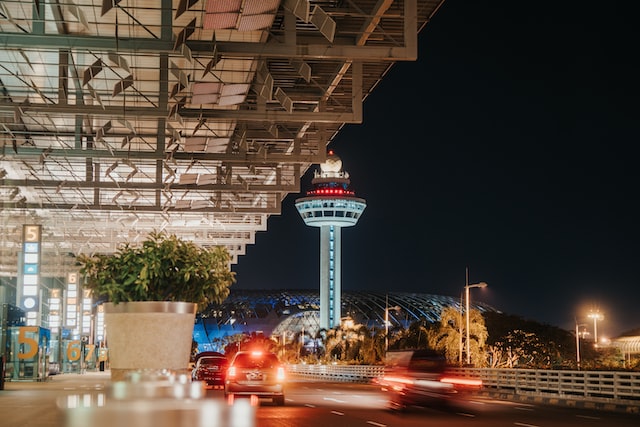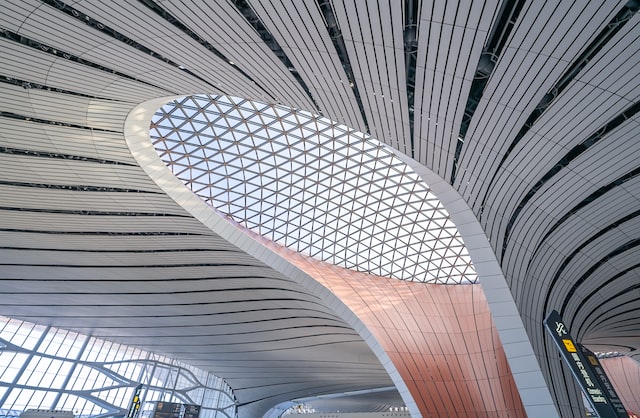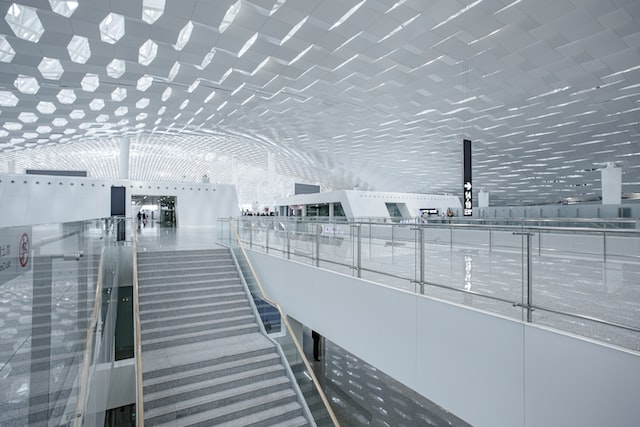Airports, especially in the west, don’t always figure as showpieces of magnificent architecture as much they are treated as utilitarian facilities. Since airports primarily function as hubs that connect the world’s air travel networks, airport developers don’t necessarily have to heavily invest in architecture and interior design to perform their basic operations. In many cities in Asia, however, many airports have been built in ways that have made them spectacles of tourism in their own right.
In this list, we’ll take a look at eight of the most photogenic airports in Asia and why they deserve to be called such.
Singapore Changi International Airport, Singapore

Photo © shawnanggg | Unsplash
Starting off this list is the Singapore Changi International Airport. This aviation hub in Southeast Asia is capable of handling up to 50 million passengers each year, but it’s mostly known for its beautifully constructed megastructure that has become a tourist destination in its own right.
The Jewel, the airport’s most recent addition, is a lifestyle hub that offers world-class shopping and entertainment experiences for travellers to Singapore. In this commercial complex, travellers can dine in some of the most excellent restaurants in Singapore without even leaving the airport. Visitors can enjoy the airport’s many themed gardens as well. In fact, one of the new must-dos in the city is to visit and take photos of the HSBC Rain Vortex—the highest and largest indoor waterfall in the world. Travellers can even book a room at a Singapore Changi Airport hotel during a long layover, so they have a cosy place to rest after exploring everything Singapore Changi International Airport has to offer.
Incheon Airport, South Korea

Photo: Shutterstock
What’s impressive about the Incheon Airport in South Korea is the amount of things to see and do in the airport. This spacious airport doesn’t only sport typical terminal facilities, like lounges, shower rooms, and ATMs, but it also has a golf course, an inline skating rink, and indoor gardens. It even houses the Incheon Airport Museum, a cultural museum where visitors can view various UNESCO artefacts, make their own handicrafts, and even catch a traditional musical performance. Needless to say, Incheon Airport lets travellers spend their time however they want to thoroughly enjoy their stay.
Kuala Lumpur International Airport, Malaysia
The interior design of the Kuala Lumpur International Airport in Malaysia brings the magic of the country’s rainforests indoors. This “airport in the forest” concept was designed by Japanese architect Kisho Kurokawa, who mainly took inspiration from Malaysia’s culture and natural environment. When passengers step inside the airport, they’ll be greeted by wooden ceilings supported by columns that feature a design that’s inspired by Malaysian oil palm trees. The airport’s domed roof design, on the other hand, draws inspiration from Islamic architecture, but is given a more modern feel with its sleek, stainless-steel renderings.
The main attraction of the Kuala Lumpur International Airport is the mini rainforest that’s located in the middle of its main terminal. Known as the KLIA Jungle Boardwalk, this patch of green gives visitors a quick sample of what they can expect if ever they decide to explore the country’s gorgeous rainforest. Here, travellers will be surrounded by an array of plants and flowers and will be greeted by a stunning waterfall. These elements give the airport a true nature-inspired touch.
Mactan-Cebu International Airport, Philippines
Terminal 2 of the Mactan-Cebu International Airport in the Philippines has proven that a simple design is enough to wow travellers and impress the architecture community. Winning in the category, “Completed Buildings – Transport” in 2019 at the World Architecture Festival, the airport’s Terminal 2 boasts a simple and elegant design that’s mainly composed of locally sourced materials. One of its main features is its magnificent roof that’s made of glulam arches that span every 30 metres. This design allows the terminal to be as column-free as possible, making its interior spacious as a result.
Beijing Daxing International Airport, China

Photo © Vincent Lin | Unsplash
Even though China’s Beijing Daxing International Airport has only been operating since 2019, it has already impressed millions of people. Not only is it one of the largest airports in the world, but the Beijing Daxing International Airport also boasts stunning interior and architectural styles that feature design principles characteristic of Chinese architecture. Looking at it from an aerial point of view, the airport’s five concourses connect to its main hall, giving it its signature “starfish” shape. Inside, the Beijing Daxing International Airport uses a radial design that incorporates futuristic and innovative facilities that provide travellers with comfort and efficiency. These features also enable convenience and flexibility in the airport’s operations.
Shenzhen Bao’an International Airport, China

Photo © Zhang liven | Unsplash
Another airport in China that’s known for its unique design and structure is the Shenzhen Bao’an International Airport. The airport’s tubular exterior and interior are covered in a honeycomb motif that not only gives the structure a more organic look, but also allows natural light into the building. Inside, there are several sculptures that look like big white trees, and these objects act both as air-conditioners and interior décor. Finally, the interior incorporates stainless steel details to give the Shenzhen Bao’an International Airport a clean, modern look.
Chhatrapati Shivaji International Airport, India

Photo © Keyur Tandel | Unsplash
Terminal 2 of the Chhatrapati Shivaji International Airport in India beautifully weaves the spirit of Mumbai into its architectural design. Its main focal point is its overhead canopy that not only hearkens back to the form of vernacular Indian pavilions, but also features glass details that are patterned to mimic the beauty of the country’s national bird, the peacock. This canopy is then held up by 30 mushroom-shaped columns, which give the airport an airy ambience. The combination of these elements gives the Chhatrapati Shivaji International Airport a vibrant character that makes it the perfect gateway to the heart of Mumbai.
Heydar Aliyev International Airport, Azerbaijan

Photo © Alexander Popovkin | Unsplash
The geometric designs and details in Azerbaijan’s Heydar Aliyev International Airport are often described to be immensely pleasing to the eye. Deviating from typical sleek styles seen in many airports, the Heydar Aliyev International Airport went with a more natural and tactile approach, featuring bespoke furnishings and décor made from natural materials like wood and stone. It also boasts strong geometric design and architectural elements that can be seen everywhere, from its hexagonal skylights to its rhombus-patterned floors. However, the airport’s most distinct features are its wooden cocoon pod structures that house shops, cafés, and other amenities like luggage storage spaces.
Many of the airports in Asia have become more than just utilitarian facilities. They’ve also become mediums that showcase their origin country’s culture through their stunning interior and architectural designs.





